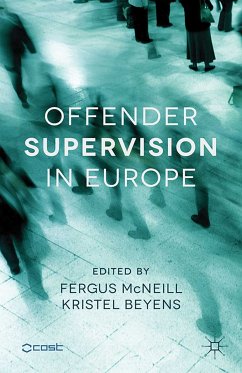
Handbook of Issues in Criminal Justice Reform in the United States (eBook, PDF)
Versandkostenfrei!
Sofort per Download lieferbar
167,95 €
inkl. MwSt.
Weitere Ausgaben:

PAYBACK Punkte
84 °P sammeln!
This handbook provides a holistic and comprehensive examination of issues related to criminal justice reform in the United States from a multidisciplinary perspective. Divided into five key domains of reform in the criminal justice system, it analyzes:- Policing- Policy and sentencing- Reentry- Treatment- Alternatives to incarcerationEach section provides a history and overview of the domain within the criminal justice system, followed by chapters discussing issues integral to reform. The volume emphasizes decreasing incarceration and minimizing racial, ethnic and economic inequalities. Each s...
This handbook provides a holistic and comprehensive examination of issues related to criminal justice reform in the United States from a multidisciplinary perspective. Divided into five key domains of reform in the criminal justice system, it analyzes:
- Policing
- Policy and sentencing
- Reentry
- Treatment
- Alternatives to incarceration
Each section provides a history and overview of the domain within the criminal justice system, followed by chapters discussing issues integral to reform. The volume emphasizes decreasing incarceration and minimizing racial, ethnic and economic inequalities. Each section ends with tangible recommendations, based on evidence-based approaches for reform.
Of interest to researchers, scholars, activists and policy makers, this unique volume offers a pathway for the future of criminal justice reform in the United States.
- Policing
- Policy and sentencing
- Reentry
- Treatment
- Alternatives to incarceration
Each section provides a history and overview of the domain within the criminal justice system, followed by chapters discussing issues integral to reform. The volume emphasizes decreasing incarceration and minimizing racial, ethnic and economic inequalities. Each section ends with tangible recommendations, based on evidence-based approaches for reform.
Of interest to researchers, scholars, activists and policy makers, this unique volume offers a pathway for the future of criminal justice reform in the United States.
Dieser Download kann aus rechtlichen Gründen nur mit Rechnungsadresse in A, B, BG, CY, CZ, D, DK, EW, E, FIN, F, GR, HR, H, IRL, I, LT, L, LR, M, NL, PL, P, R, S, SLO, SK ausgeliefert werden.












